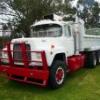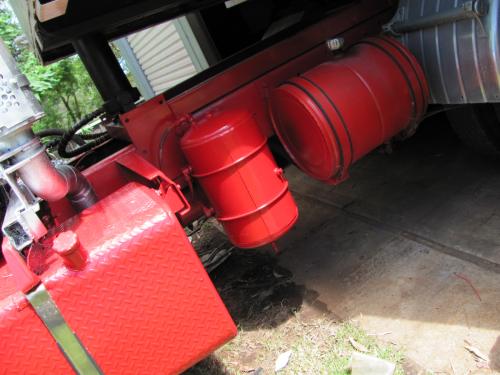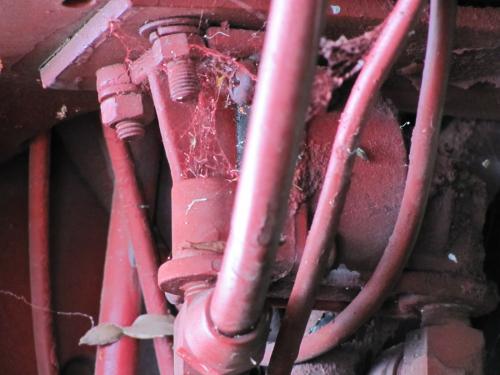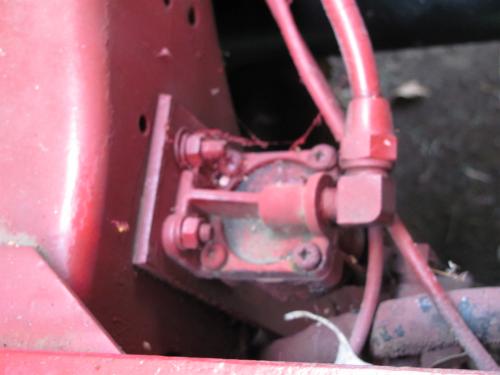-
Posts
150 -
Joined
-
Last visited
Content Type
Profiles
Forums
Gallery
Events
Blogs
BMT Wiki
Collections
Store
Posts posted by r600
-
-
Don't you mean a female quick-connect? The male ends do not restrict airflow when uncoupled, so it would drain the air tank the moment the shop air was disconnected.
On my truck, there are two tanks in front of the passenger side fuel tank. The top one is the one that has the most oil/water to drain if/when necessary...so that's the one I put a female quick-connect on.
Then, I took 2 male ends and a simple valve in between and use that adapter to hook up to shop air (or to service truck air if necessary). I carry various male ends in my tool box, because it seems like you can go to 3 or 4 different shops and find 'em using 3 or 4 different styles of quick-connects....easy enough to swap out for the one you need on your adapter IF you have it.
thanks rob will check where the compressor line goes too,and rowdy/r yes needs to be female as you said,cheers adrian
-
-
Looks like a limiting valve for front brakes.
have pull it apart put new o rings in its not leaking anymore,thanks adrian
-
Oh.... sorry, I miss read what you wanted to do... anyways. find the air tank that the air compressor feeds into. Just follow the copper line from the compressor to the first air tank. thats your "wet tank". Put a air fitting onto that tank and it will feed air to the whole system just as if the truck was running. you will have parking and service air press as soon as you start filling it.
Trent
cool thanks trent
-
-
well considering that the air compressor is bolted to the engine. the engine needs to run to make air.?put the fitting on the wet air tank so that as air press drops the gov kicks in and puts the compressor back to work. You will need to run a hose from the wet tank up to the deck plate as its a PITA to get under the truck every time you need to get air. or just use the red trailer hose with a glad hand and hose to a air fitting.push the red park knob in when you want to get air from it
sorry didnt say i want to plug my shed compressor into the trucks air system to build air up without running trucks engine???
-
hey i have r685rst and want to put an air fitting in so i can pump the air up without running the engine can anyone help,cheers adrian
-
If they're spin on filters I would think probably that they are 485GB3191B, but 3232 and 3236 filters should fit too and are supposed to provide better filtering.
yes mate they are spin on thanks adrian
-
Maybe 483GB441.
ok now what about engine oil filter numbers
-
Is there a number on the old filter?
no part number on old one but it a short filter like primary but with different thread
-
hey,just went to change primary and secondary filters for the first time,the primary filter483gb444 fitted but the secondary filter they gave me 483gb440 is wrong its too large where the o ring seals on filter head???can anyone help with the right part number????cheers adrian
-
Hello, these ones are back in for now. it wouldnt surprise me if they still have them as you can still buy most other parts.
frame rails are still available, there is 11 sets in Sydney, a new R model cab there also.
Grant
hey grant funny you tell me mack have 11 sets ,i asked my local dealer 2 years ago to see if they could get rails never got back to me so extended mine,some spare parts guys dont give a sh-t,what the cab worth do you know???cheers adrian


-
Hello, these ones are back in for now. it wouldnt surprise me if they still have them as you can still buy most other parts.
frame rails are still available, there is 11 sets in Sydney, a new R model cab there also.
Grant
hey grant funny you tell me mack have 11 sets ,i asked my local dealer 2 years ago to see if they could get rails never got back to me so extended mine,some spare parts guys dont give a sh-t,what the cab worth do you know???cheers adrian


-
Hi Adrian, I would follow the air line from the emergency side of the brake chambers back to the quick release valve, the relay valve on frame fed from air tank, and the air tank check valve if there is one. It sounds to me like you have a valve that is very slow to function. Do the parking/spring brakes apply as soon as they are set? If they do then you can rule out the quick release valve as it's function in that application is to exhaust the air that is holding the parking brakes released quickly. Don't forget to evaluate the PP-1 valve in the dash that you actuate to release the brakes. If it is passing air through it slowly the relay valve will be slow to operate and you will have a slow release as you are experiencing. A slow relay valve will do the same thing in delaying the needed air to release the brakes.
Here is what I would do: Take the air line off at the pilot port of the relay valve. With the air built up in the truck but engine off, push the PP1 valve, (yellow handle) in and listen for a sudden rush of air at the disconnected fitting. You should hear this air escape immediately without delay or ramp up. If the air starts slow and increases in flow, replace your PP-1 valve in the dash. If the air rush is immediate and without delay, reconnect this pilot line and disconnect the lines that run to the emergency side of the brake chambers. Repeat as mentioned earlier. There should be no delay, or ramp up of escaping air pressure.
A relay valve has tank pressure on one side of it at all times. When the pilot port has air pressure applied to it, the relay valve opens allowing air pressure to pass through it to perform a function downstream. In this case, release the brakes.
Rob
thanks rob,i'll check that on the weekend and let you know,cheers adrian
-
ok,no the pedals not stuck work freely,the chambers are old but what i dont thik its that because its all 4 rear release at the same slow pace and awhile ago i caged the spring and there was still heaps of tension on the spring,i have painted the chassis and dont want to pull every thing off if it can be helped,maybe rob will read this and throw some light on it ,cheers adrian

-
hi,can anyone help me with the rear brakes not releasing properly when i let the maxi brake switch off on the dash,all four brakes are slow to come off,maybe its the foot valve because both release at the same slow speed if it was a relay valve in the chassis i think one side maybe slow and the other fast and seems to be better when service brake used???maybe its not the foot valve ???help thanks adrian


-
Hi Adrian, Steve's answered it for you, I have noticed though some macks will be stamped as RST, but appear to have a heavyweight rear end. In the 60's thru to 80's to me an RS was double splined rear axles, i.e. 40's or 44's. In the late 60's alot of these Macks were only 40,000lbs rear, but people say they are 44,000lbs because they have a cast pedestal and double splined axles, I'm not so sure. Jeffro.
thanks jeffro,it all every interesting,cheers adrian
-
hey mark,where in n.s.w are you? i am IN NEWCASTLE, is your truck still on the road??cheers adrian
-
Maybe not in a r685ST but were available in a R685 RST
Steve
thanks everybody for the information,steve thanks to you i didnt take any notice before that your truck r685rst too,cheers all adrian
-
hey rob,is r686 the same as r685??my engine is endt675 and the built date 1976,thanks(ps hope your feeling better)adrian
your on the ball superdog,does the rst mean anything special its only got 34,000 backend though it maybe light duty???
-
hey rob,is r686 the same as r685??my engine is endt675 and the built date 1976,thanks(ps hope your feeling better)adrian
-
can anyone tell me what r685rst stands for??thanks adrian
-
Does this truck have low oil presure?
no, the truck has strong oil presure even when hot!what's the link with oil presure????adrian
-
 1
1
-
-
I've seen a lot of good advice here, but having encountered this problem lots of times, your problem as stated above is most likely the spring in your throttle arm. This is very common and easy to fix. Just grasp the throttle arm and see how far forward it moves before the throttle shaft starts to turn. If your spring is weak you'll have slack in the mechanism of the throttle arm. If so, then just replace the throttle arm.
This is a very cheap, inexpensive plain and simple fix that I've told dozens of people through the years. I've seen people spend thousands of dollars trying to fix this problem, when it was just this simple.
DROVE THE TRUCK HOME TONIGHT THAT THROTTLE IS A F#@k OF A THING!NOT BAD ON A GOOD ROAD BUT ON DIRT ITS A SHIT.DID CHECK THE THROTTLE LEVER SPRING, IF I HOLD THE BOTTOM PART OF THE LEVER THAT BOLTS TO THE SHAFT INTO THE PUMP AND MOVE THE TOP HALF OF THE LEVER IT MOVES HEAPS BEFORE IT TAKES UP.??IS IT GOOD OR BAD??WHY HAVE THE LEVER SETUP LIKE THAT???????????????(PS DID I SAY IT DRIVES GOOD A PART FROM THAT THROTTLE) CHEERS AND HELP ADRIAN









r-model hood dog bolt size
in Exterior, Cab, Accessories and Detailing
Posted
can anyone tell me what size the bolts are that hold the dog to the bonnet are?????cheers adrian